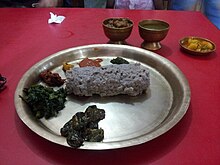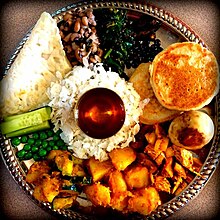The value of history is that it helps us understand the present and the future. In food service, knowledge of our professional heritage helps us see why we do things as we do, how our cooking techniques have been developed and refined, and how we can continue to develop and innovate in the years ahead.
An important lesson of history is that the way we cook now is the result of the work done by countless chefs over hundreds of years. Cooking is as much science as it is art. Cooking techniques are not based on arbitrary rules some chefs made up long ago. Rather, they are based on an understanding of how different foods react when heated in various ways, when combined in various proportions, and so on. The chefs who have come before us have already done much of this work so we don’t have to.
This doesn’t mean there is no room for innovation and experimentation or that we should never challenge old ideas. But it does mean a lot of knowledge has been collected over the years, and we would be smart to take advantage of what has already been learned. Furthermore, how can we challenge old ideas unless we know what those old ideas are? Knowledge is the best starting point for innovation.
The Origins of Classical and Modern Cuisine
Quantity cookery has existed for thousands of years, as long as there have been large groups of people to feed, such as armies. But modern food service is said to have begun shortly after the middle of the eighteenth century. At this time, food production in France was controlled by guilds. Caterers, pastry makers, roasters, and pork butchers held licenses to prepare specific items. An innkeeper, in order to serve a meal to guests, had to buy the various menu items from those operations licensed to provide them. Guests had little or no choice and simply ate what was available for that meal.
In 1765, a Parisian named Boulanger began advertising on his shop sign that he served soups, which he called restaurants or restoratives. (Literally, the word means “fortifying.”) According to the story, one of the dishes he served was sheep’s feet in a cream sauce. The guild of stew makers challenged him in court, but Boulanger won by claiming he didn’t stew the feet in the sauce but served them with the sauce. In challenging the rules of the guilds, Boulanger unwittingly changed the course of food-service history.
The new developments in food service received a great stimulus as a result of the French Revolution, beginning in 1789. Before this time, the great chefs were employed in the houses of the French nobility. With the revolution and the end of the monarchy, many chefs, suddenly out of work, opened restaurants in and around Paris to support themselves. Furthermore, the revolutionary government abolished the guilds. Restaurants and inns could serve dinners reflecting the talent and creativity of their own chefs rather than being forced to rely on licensed caterers to supply their food. At the start of the French Revolution, there were about 50 restaurants in Paris. Ten years later, there were about 500.
Another important invention that changed the organization of kitchens in the eighteenth century was the stove, or potager, which gave cooks a more practical and controllable heat source than an open fire. Soon commercial kitchens became divided into three departments: the rotisserie, under the control of the meat chef, or rôtisseur; the oven, under the control of the pastry chef, or pâtissier; and the stove, run by the cook, or cuisinier. The meat chef and pastry chef reported to the cuisinier, who was also known as chef de cuisine, which means “head of the kitchen.”
Carême
All the changes that took place in the world of cooking during the 1700s led to, for the first time, a difference between home cooking and professional cooking. One way we can try to understand this difference is to look at the work of the greatest chef of the period following the French Revolution, Marie-Antoine Carême (1784–1833). As a young man, Carême learned all the branches of cooking quickly, and he dedicated his career to refining and organizing culinary techniques. His many books contain the first systematic account of cooking principles, recipes, and menu making.
At a time when the interesting advances in cooking were happening in restaurants, Carême worked as a chef to wealthy patrons, kings, and heads of state. He was perhaps the first real celebrity chef, and he became famous as the creator of elaborate, elegant display pieces and pastries, the ancestors of our modern wedding cakes, sugar sculptures, and ice and tallow carvings. But it was Carême’s practical and theoretical work as an author and an inventor of recipes that was responsible, to a large extent, for bringing cooking out of the Middle Ages and into the modern period. Carême emphasized procedure and order. His goal was to create more lightness and simplicity. The complex cuisine of the aristocracy—called Grande Cuisine—was still not much different from that of the Middle Ages and was anything but simple and light.
Carême’s efforts were a great step toward modern simplicity. The methods explained in his books were complex, but his aim was pure results. He added seasonings and other ingredients not so much to add new flavors but to highlight the flavors of the main ingredients. His sauces were designed to enhance, not cover up, the food being sauced. Carême was a thoughtful chef, and, whenever he changed a classic recipe, he was careful to explain his reasons for doing so.
Beginning with Carême, a style of cooking developed that can truly be called international, because the same principles are still used by professional cooks around the world. Older styles of cooking, as well as much of today’s home cooking, are based on tradition. In other words, a cook makes a dish a certain way because that is how it always has been done. On the other hand, in Carême’s Grande Cuisine,and in professional cooking ever since, a cook makes a dish a certain way because the principles and methods of cooking show it is the best way to get the desired results. For example, for hundreds of years, cooks boiled meats before roasting them on a rotisserie in front of the fire. But when chefs began thinking and experimenting rather than just accepting the tradition of boiling meat before roasting, they realized either braising the meat or roasting it from the raw state were better options.
Escoffier
Georges-Auguste Escoffier(1847–1935), the greatest chef of his time, is still revered by chefs and gourmets as the father of twentieth-century cookery. His two main contributions were (1) the simplification of classical cuisine and the classical menu, and (2) the reorganization of the kitchen.
Escoffier rejected what he called the “general confusion” of the old menus, in which sheer quantity seemed to be the most important factor. Instead, he called for order and diversity and emphasized the careful selection of one or two dishes per course, dishes that followed one another harmoniously and delighted the taste with their delicacy and simplicity.
Escoffier’s books and recipes are still important reference works for professional chefs. The basic cooking methods and preparations we study today are based on Escoffier’s work. His book Le Guide Culinaire, which is still widely used, arranges recipes in a simple system based on main ingredient and cooking method, greatly simplifying the more complex system handed down from Carême. Learning classical cooking, according to Escoffier, begins with learning a relatively few basic procedures and understanding basic ingredients.
Escoffier’s second major achievement, the reorganization of the kitchen, resulted in a streamlined workplace better suited to turning out the simplified dishes and menus he instituted. The system of organization he established is still in use, especially in large hotels and full-service restaurants, as we discuss later in this chapter.
Modern Technology
Today’s kitchens look much different from those of Escoffier’s day, even though our basic cooking principles are the same. Also, the dishes we eat have gradually changed due to the innovations and creativity of modern chefs. The process of simplification and refinement, to which Carême and Escoffier made monumental contributions, is ongoing, adapting classical cooking to modern conditions and tastes.

















